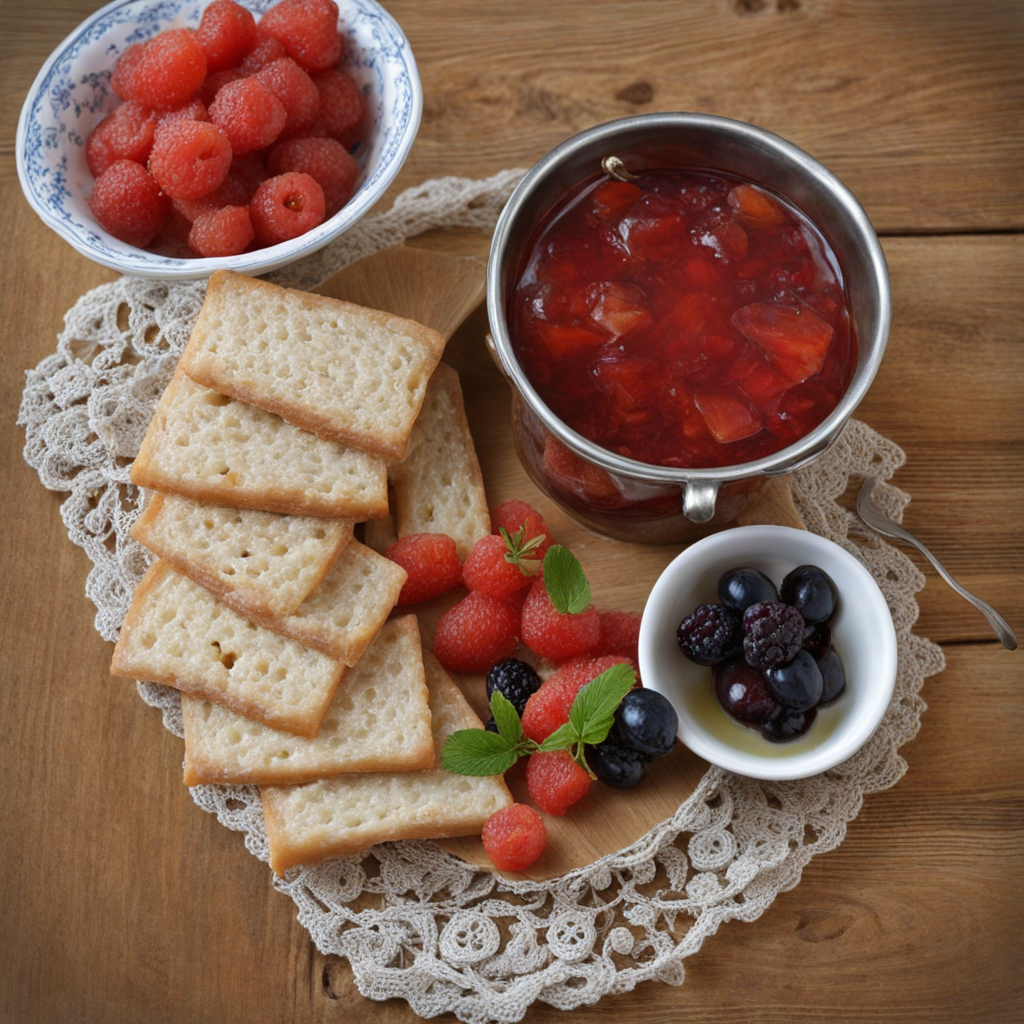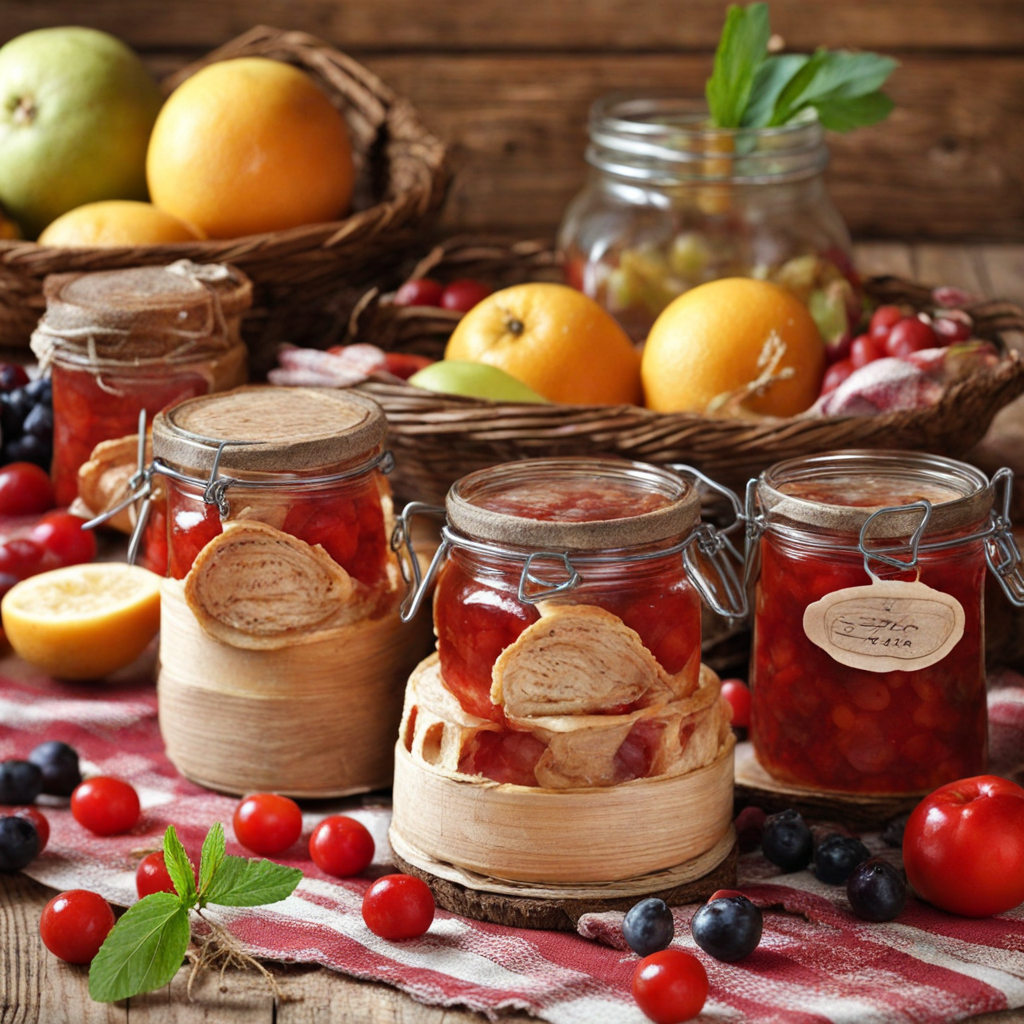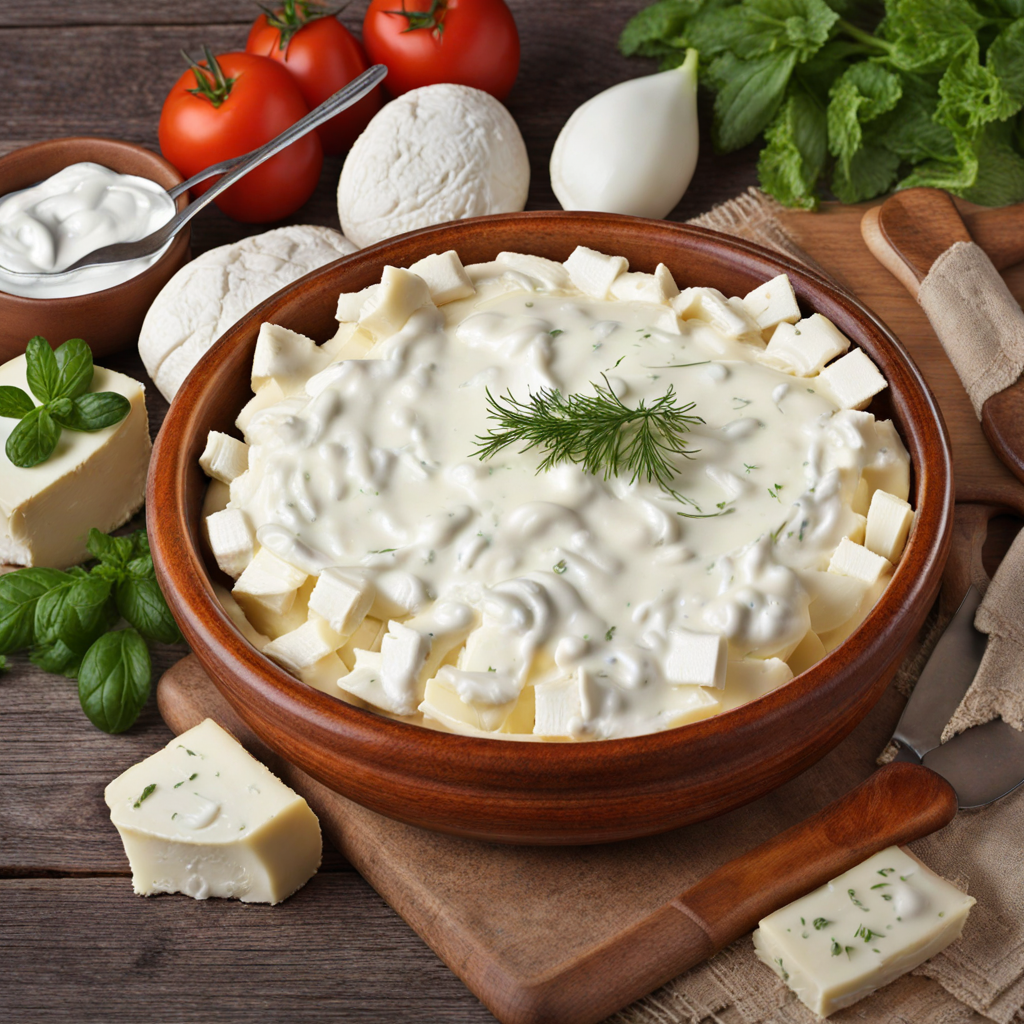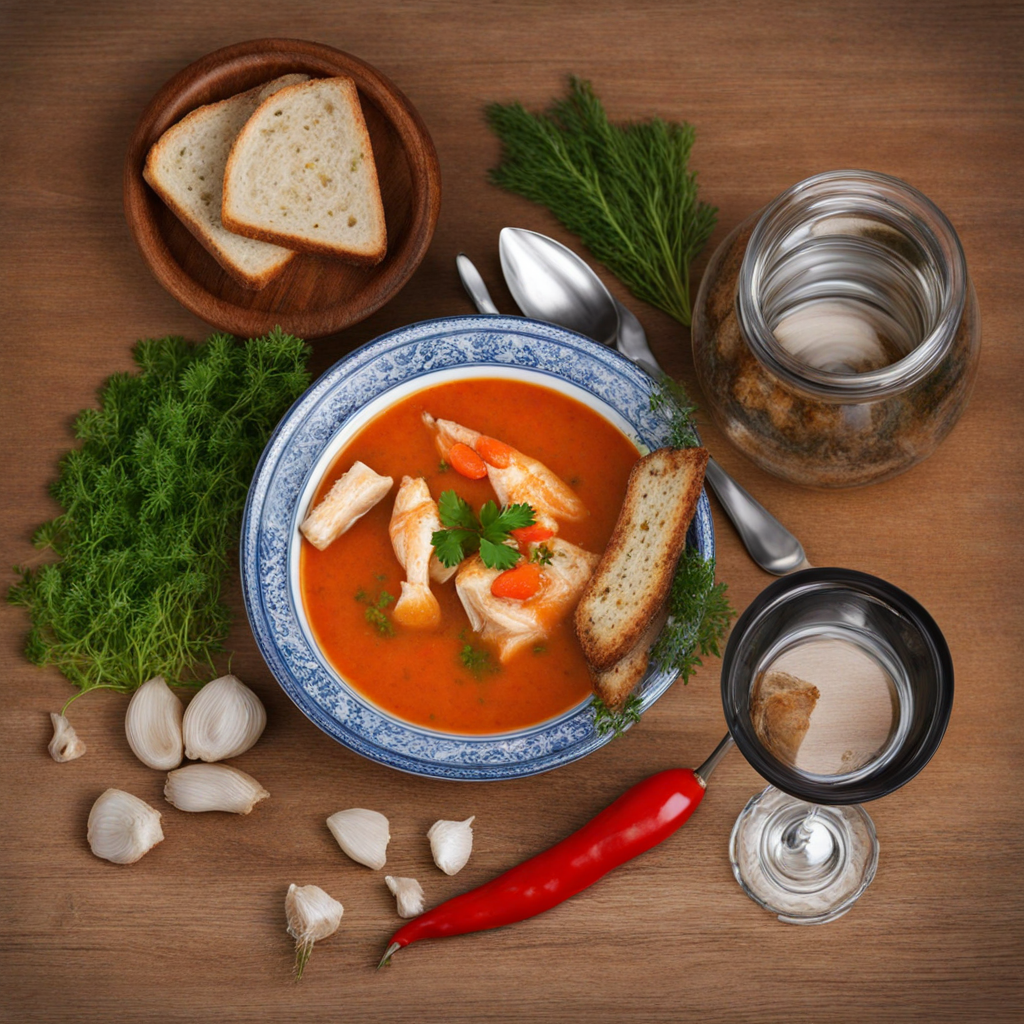Slatko
Slatko is a traditional Serbian delicacy that embodies the essence of homemade sweetness and natural flavors. At its core, Slatko is a fruit preserve, typically made with seasonal fruits such as strawberries, figs, or plums, combined with sugar and water. The preparation involves cooking the fruit slowly, allowing it to soften and release its juices, which infuse the thick syrup with vibrant flavors. The result is a thick, sweet concoction that beautifully balances the natural tartness of the fruit with the sugary richness, making it a delightful treat for both the palate and the senses. In Serbian culture, Slatko is more than just a dessert; it holds a special place in hospitality. It is often served to guests as a symbol of welcome and friendship. Traditionally, a small spoonful of Slatko is placed in a bowl, accompanied by a glass of water, and the ritual of sharing this sweet treat signifies the joy of companionship. This custom highlights the importance of community and connection, making Slatko a cherished part of Serbian culinary heritage. The versatility of Slatko is another reason to explore this delicious food. It can be enjoyed on its own, spread on bread, or used as a topping for pancakes and desserts, adding a touch of sweetness to any dish. Additionally, Slatko can be made with a variety of fruits, allowing for different flavor profiles, from the bright and juicy notes of cherries to the rich and earthy tones of figs. This delightful preserve not only offers a taste of Serbia but also invites you to experience the warmth of its culture through the simple act of sharing food.
How It Became This Dish
The Sweet Legacy of Слатко: A Journey through Serbian Culinary History #### Origins of Слатко Слатко, a quintessential Serbian delicacy, is a sweet fruit preserve that has been an integral part of the country’s culinary heritage. Its origins can be traced back to the Ottoman Empire, which influenced culinary practices across the Balkans. The word "слатко" itself stems from the Serbian word for "sweet," reflecting its sugary essence. Traditionally, Слатко is made from a variety of fruits, including berries, apricots, and figs, which are cooked with sugar and sometimes flavored with citrus zest or spices. This simple yet delectable concoction has evolved into a symbol of hospitality and cultural pride in Serbia. The technique of preserving fruits in sugar likely originated from the necessity to extend the shelf life of seasonal produce. The use of sugar not only helped in preservation but also enhanced the flavors of the fruits, creating a lush, syrupy consistency that is as much about the preservation of taste as it is about the fruits themselves. Early recipes for Слатко would have been simple, but over the centuries, they have become more complex, incorporating a variety of fruits and sometimes even nuts. #### Cultural Significance Слатко occupies a special place in Serbian culture, often served to guests as a sign of hospitality. In Serbian tradition, when visitors arrive at a home, they are greeted with Слатко and a glass of water, symbolizing the sweetness of the relationship and the purity of the gesture. This ritual underscores the importance of food in forging social bonds and showcasing Serbian hospitality. It is not merely a dessert but a cultural gesture, embodying warmth and generosity. Moreover, Слатко is traditionally associated with significant life events. It is often served at weddings, baptisms, and other celebrations, marking rites of passage and communal gatherings. In these contexts, it signifies abundance and joy, reinforcing its role as a celebratory food. The act of sharing Слатко with guests is a way of sharing one's blessings, making it a cherished tradition in Serbian households. #### Development Over Time As Serbia emerged from the shadow of the Ottoman Empire and into the modern era, the production and consumption of Слатко evolved alongside societal changes. In the 19th century, with the rise of national consciousness and the establishment of a distinct Serbian identity, traditional foods like Слатко were embraced not only as culinary delights but as embodiments of cultural identity. The growing nationalism in Serbia during this period led to a revival of interest in traditional recipes and local ingredients. The industrial revolution in the late 19th and early 20th centuries saw the introduction of new technologies and methods for food preservation, which influenced the way Слатко was made. While traditional methods remained popular, the availability of canned fruit and sugar allowed for quicker and more efficient production, leading to a proliferation of Слатко varieties that could be enjoyed year-round. This accessibility helped cement Слатко’s place in both everyday life and special occasions. Additionally, the post-World War II era marked a period of modernization in Serbia, with the introduction of mass production methods. While this led to a decline in artisanal practices, it also made Слатко more accessible to a broader audience. Supermarkets and local stores began to stock various types of Слатко, from homemade to mass-produced, reflecting the diverse tastes and preferences of the Serbian people. #### Contemporary Variations Today, Слатко is celebrated not only for its traditional recipes but also for its innovative adaptations. Contemporary Serbian chefs and home cooks alike experiment with new flavor combinations, incorporating exotic fruits and spices that reflect global culinary trends. Ingredients like lavender, ginger, and even chili peppers have been introduced into the mix, creating exciting new takes on this classic dish. Furthermore, the rise of the farm-to-table movement and a renewed interest in local and organic foods have contributed to a resurgence in traditional food practices. Many families are returning to the art of making Слатко at home, using seasonal fruits sourced from local markets or their own gardens. This revival underscores a growing appreciation for the craftsmanship involved in traditional food preparation and the desire to connect with the land and the heritage it represents. #### The Role of Слатко in Serbian Identity In a world increasingly dominated by fast food and convenience, Слатко stands as a testament to the enduring value of tradition and the importance of taking time to savor the fruits of one’s labor. The act of making Слатко—selecting the fruit, preparing it with care, and preserving it for future enjoyment—echoes a deeper connection to the land and a respect for the cycles of nature. It serves as a reminder of the importance of patience and craftsmanship in culinary practices. Moreover, Слатко has also found its way into the global culinary scene, representing Serbian cuisine to international audiences. Food festivals, cultural events, and culinary competitions have introduced Слатко to a wider audience, allowing people from different backgrounds to appreciate its unique flavor and cultural significance. This exposure not only promotes Serbian culinary traditions but also fosters a greater understanding of the rich tapestry of Balkan cuisine. #### Conclusion Слатко is more than just a sweet treat; it is a cultural artifact that encapsulates the history, traditions, and values of the Serbian people. From its humble origins as a method of fruit preservation to its role as a symbol of hospitality and joy, Слатко has transcended its culinary roots to become an emblem of Serbian identity. As it continues to evolve and adapt to contemporary tastes while preserving its traditional methods, Слатко remains a beloved staple in Serbian households and a cherished reminder of the past. The sweet legacy of Слатко is a testament to the enduring power of food in shaping culture, community, and identity.
You may like
Discover local flavors from Serbia







